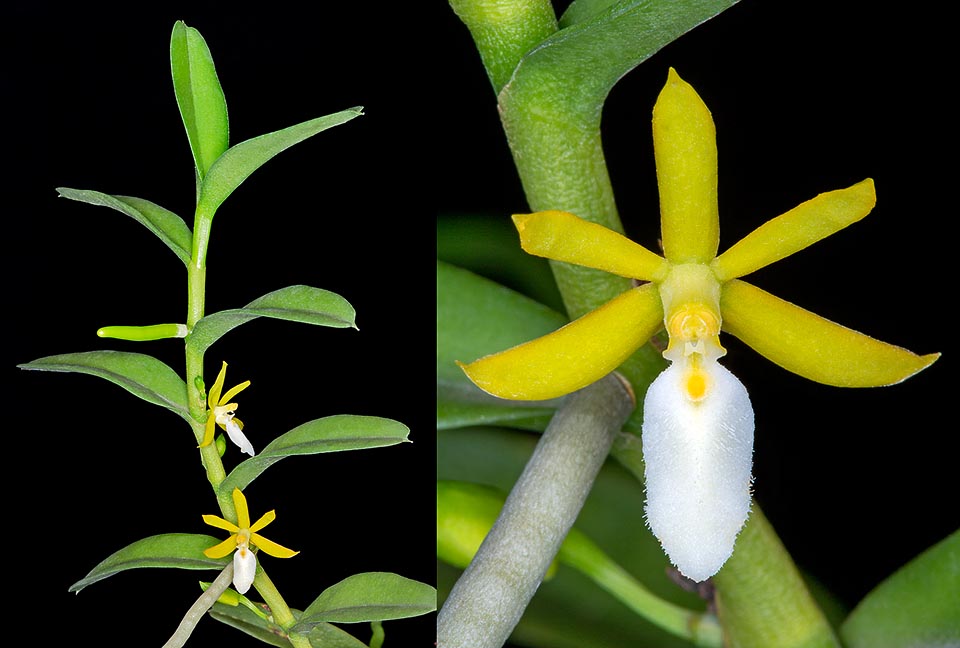Family : Orchidaceae

Text © Pietro Puccio

English translation by Mario Beltramini
The species is native to Borneo (Sabah) where it grows as epiphyte on the trees of the humid forests at hilly altitudes.
The name of the genus is the combination of the Greek substantives “θρίξ” (thrix) = hair and “γλῶττα” (glotta) = tongue, with reference to the down preent on the labellum; the species is honoured to Virginia (U.S.A.) nurseryman Dwayne Lowder.
Common names: Lowder’s Trichoglottis.
The Trichoglottis lowderiana Choltco (2009) is a monopodial epiphytic orchid with cylindrical erect or drooping stems, from which depart robust and flesh aerial roots, and alternate leaves, distichous, coriaceous, oblong with bilobed apex, 5-8 cm long and 2-2,5 cm broad. Short inflorescences from more nodes at the same time bearing 1-2 flowers of 2,5-3 cm of diameter, with yellow sepals and petals and white tomentose labellum with yellow sport at the base, pleasantly scented.
It reproduces by seed, in vitro, and at amateur level by division of the stem in two portions provided of a sufficient number of leaves and roots, the upper part is to be treated as an adult plant, the lower one, placed in an ambient with high temperature and humidity, will produce one or more plants from dormant buds that can be taken off as soon as they have formed their own rooting apparatus.

Rare in cultivation, the Trichoglottis lowderiana is an epiphyte of the humid hilly forests of Borneo. Erect or drooping cylindrical stems, with 5-8 cm alternate leaves and robust aerial fleshy roots. The very short inflorescences come out at the same time from more nodes with 1-2 scented flowers of 2,5-3 cm of diameter © Giuseppe Mazza
The species is reported in the appendix II of CITES (species whose trade is internationally ruled).
→ For general notions about ORCHIDACEAE please click here.
